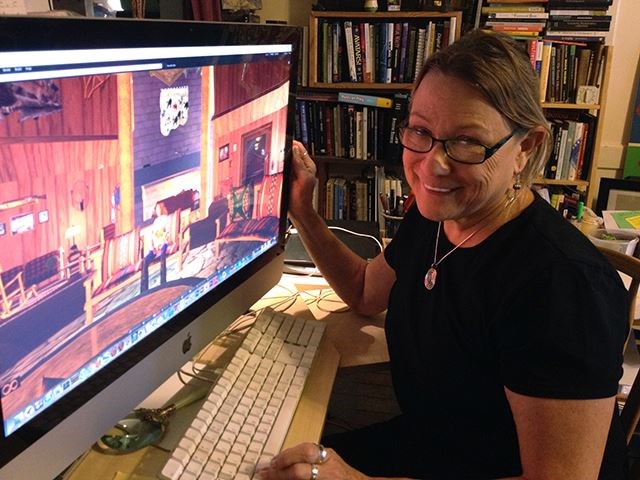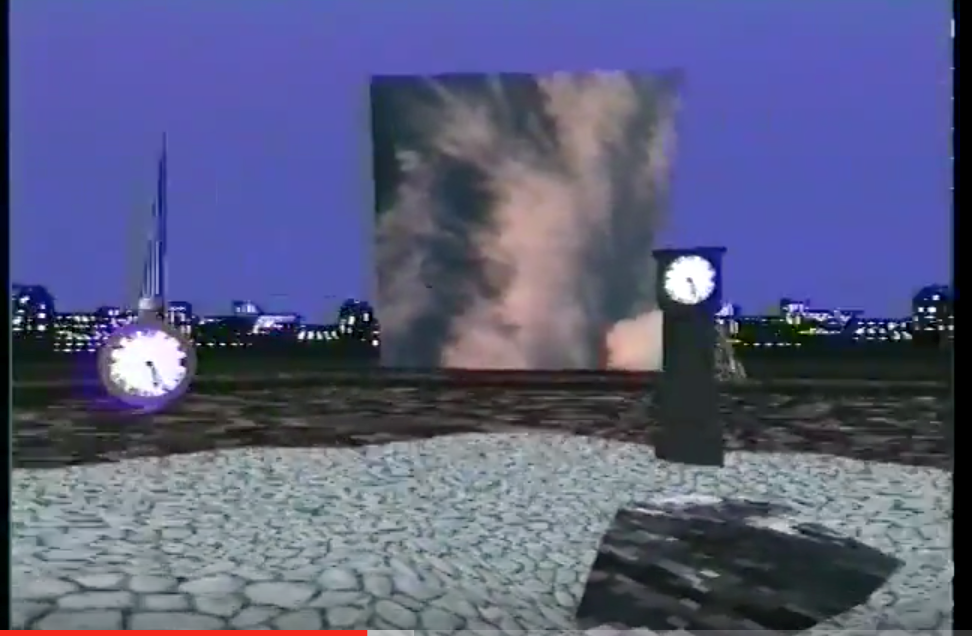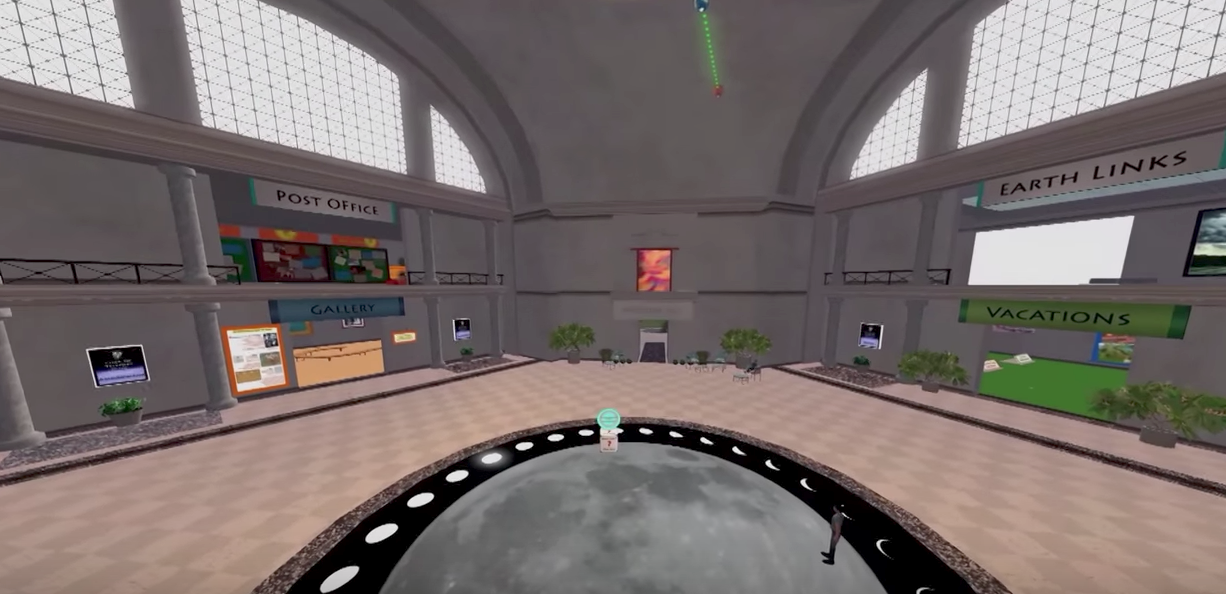 Dr. Jacquelyn Morie https-//www.provideocoalition.com/transmedia-spotlight-dr-jacki-morie-virtual-worlds/ Dr Jacquelyn Ford Morie has been working in the field of immersive and virtual arts and technology for more than two decades. She has established herself as one of the foremost researchers advancing these mediums, conceptualizing and designing new environments and platforms for social use and welfare. She believes strongly in the emotive possibilities of virtual reality and how it allows communication, perusing environments and interactions that elicit the most engaging responses from participants. In her work she strives to discover and promote how virtual tools can positively effect human behavior and social interactions, innovating immersive methods for social connectivity, learning, the expansion of how we relate to the world.
Dr. Jacquelyn Morie https-//www.provideocoalition.com/transmedia-spotlight-dr-jacki-morie-virtual-worlds/ Dr Jacquelyn Ford Morie has been working in the field of immersive and virtual arts and technology for more than two decades. She has established herself as one of the foremost researchers advancing these mediums, conceptualizing and designing new environments and platforms for social use and welfare. She believes strongly in the emotive possibilities of virtual reality and how it allows communication, perusing environments and interactions that elicit the most engaging responses from participants. In her work she strives to discover and promote how virtual tools can positively effect human behavior and social interactions, innovating immersive methods for social connectivity, learning, the expansion of how we relate to the world.
 https://motherboard.vice.com/en_us/article/z4m5w8/a-qa-with-virtual-reality-pioneer-jackie-morieDr. Morie in Early VR technology She started her career as a fine artist and increasingly became interested in digital and virtual mediums. She explained how, as a visual artist, she wanted to share large exhibits with people who could have a broader experience of the gallery, and wanted to create these as fully immersive experiences (Space & time: The true potential of VR). At this point she discovered virtual reality as a possible tool for such engagements but at the time these tools were extremely expensive and available primarily in research laboratories of university campuses. She thus pursued an education that would allow her to utilize these tools -- she received a Masters of Fine Arts, a Masters in Computer Science from University of Florida in 1988 and her Phd in immersive environments at the University of East London in 2008. One of her early projects, completed in 1994, was the virtual experience Virtopia -- a colorful and immersive interaction that moves the participant through morphing abstract, digital landscapes. As a result of advancing in this field and her years of studies, she helped organize and create the prestigious University of Southern California Institute for Creative Technologies in 1999, and has gone on to start her own company, All These Worlds which continues her work of building social, virtual worlds and environments.
https://motherboard.vice.com/en_us/article/z4m5w8/a-qa-with-virtual-reality-pioneer-jackie-morieDr. Morie in Early VR technology She started her career as a fine artist and increasingly became interested in digital and virtual mediums. She explained how, as a visual artist, she wanted to share large exhibits with people who could have a broader experience of the gallery, and wanted to create these as fully immersive experiences (Space & time: The true potential of VR). At this point she discovered virtual reality as a possible tool for such engagements but at the time these tools were extremely expensive and available primarily in research laboratories of university campuses. She thus pursued an education that would allow her to utilize these tools -- she received a Masters of Fine Arts, a Masters in Computer Science from University of Florida in 1988 and her Phd in immersive environments at the University of East London in 2008. One of her early projects, completed in 1994, was the virtual experience Virtopia -- a colorful and immersive interaction that moves the participant through morphing abstract, digital landscapes. As a result of advancing in this field and her years of studies, she helped organize and create the prestigious University of Southern California Institute for Creative Technologies in 1999, and has gone on to start her own company, All These Worlds which continues her work of building social, virtual worlds and environments.  https://www.youtube.com/watch?v=ZO-LE8VMg_oVirtopia Recently Dr. Morie has been developing a project with NASA called ANSIBLE designed for the well being and training of astronauts who will undertake the long missions to Mars in the near future. Scientists realized that the isolation from this journey could cause severe psychological difficulties for the astronauts, so Dr. Morie and a team were commissioned to prepare the travellers, and provide them with an engaging social space, an ecosystem as she calls it, to utilize and interact with each other, family members and friends back home during the daunting trek. Central to the themes of this research, Morie has described her belief that "Virtual worlds can give us social connectivity, built-in support groups, and ways to avoid ever being alone again," (Forbes, "After Second Life, Can Virtual Worlds Get a Reboot?" The world is shaped around a user's avatar -- it moves in to a building, the center of the ecosystem, called the "Family Communication Center" where there is a post office for messages, a club where users can participate in watching movies or listening to comedians together, a library, a weather room to see how the climate is on earth, an art gallery, and artificial intelligence agents to teach them more about the environment (Space & time: The true potential of VR - Jacki Ford Morie & Mary Aiken.) The servers from Earth are synchronized to account for the time difference in communication from their location, so participants can partake in activities together, even build things for each other, as 3d printers will be provided on the flights. The project progressed in 2015 and six scientists agreed to be isolated for a year inside a lava mountain in Hawaii, sharing a thousand feet of living space, engaging with this virtual ecosystem, using the tools Morie developed to stay in touch with friends and family in the outside world.
https://www.youtube.com/watch?v=ZO-LE8VMg_oVirtopia Recently Dr. Morie has been developing a project with NASA called ANSIBLE designed for the well being and training of astronauts who will undertake the long missions to Mars in the near future. Scientists realized that the isolation from this journey could cause severe psychological difficulties for the astronauts, so Dr. Morie and a team were commissioned to prepare the travellers, and provide them with an engaging social space, an ecosystem as she calls it, to utilize and interact with each other, family members and friends back home during the daunting trek. Central to the themes of this research, Morie has described her belief that "Virtual worlds can give us social connectivity, built-in support groups, and ways to avoid ever being alone again," (Forbes, "After Second Life, Can Virtual Worlds Get a Reboot?" The world is shaped around a user's avatar -- it moves in to a building, the center of the ecosystem, called the "Family Communication Center" where there is a post office for messages, a club where users can participate in watching movies or listening to comedians together, a library, a weather room to see how the climate is on earth, an art gallery, and artificial intelligence agents to teach them more about the environment (Space & time: The true potential of VR - Jacki Ford Morie & Mary Aiken.) The servers from Earth are synchronized to account for the time difference in communication from their location, so participants can partake in activities together, even build things for each other, as 3d printers will be provided on the flights. The project progressed in 2015 and six scientists agreed to be isolated for a year inside a lava mountain in Hawaii, sharing a thousand feet of living space, engaging with this virtual ecosystem, using the tools Morie developed to stay in touch with friends and family in the outside world.
 https://www.pcmag.com/article2/0,2817,2488057,00.aspFamily Communication Center of ANSIBLE She has also researched how these tools can help relieve the stress placed on soldiers and alleviate the traumas they have faced in their daily living and as they return home. Within the virtual environment "Second Life" she designed a social welfare center for soldiers and veterans. Morie created a an Iraqi village complete with artificial intelligence characters, "non-threatening villagers... an old man going to a mosque and a tea shop" and she entered the environment with her own avatar and the veteran's avatar, guiding him through it -- a visceral sensory experience for him, a creation she designed for "healing and repair" instead of merely combat training (Forbes, "After Second Life, Can Virtual Worlds Get a Reboot?)
https://www.pcmag.com/article2/0,2817,2488057,00.aspFamily Communication Center of ANSIBLE She has also researched how these tools can help relieve the stress placed on soldiers and alleviate the traumas they have faced in their daily living and as they return home. Within the virtual environment "Second Life" she designed a social welfare center for soldiers and veterans. Morie created a an Iraqi village complete with artificial intelligence characters, "non-threatening villagers... an old man going to a mosque and a tea shop" and she entered the environment with her own avatar and the veteran's avatar, guiding him through it -- a visceral sensory experience for him, a creation she designed for "healing and repair" instead of merely combat training (Forbes, "After Second Life, Can Virtual Worlds Get a Reboot?)
Dr Morie realizes the wide array of possibilities for social welfare, learning and psychological benefit that virtual experiences can make available to us, and continues to strive for advancements in this field for positive social means. She has researched and respects that the youngest of our society are the first to adapt to these techniques, that more than half of the virtual accounts registered today are of children aged 5-15, as virtual reality can give them a broader experience than perhaps the one our current society invites them to -- the blocks around their home, the limiting "free exploration" that has developed socially over the years (Forbes, After Second Life, Can Virtual Worlds Get a Reboot). The greatest possibilities she sees in these tools are the broadening of social engagements, the relief from isolation -- but she does not envision that these ecosystems will replace real experiences, but rather that they are creations that will enliven them, that will encourage learning and understanding of other cultures and communities, and it is fitting that these experiences are all built from off the textures and artwork that brought her into these studies decades ago. In this manner Dr. Morie is a great example of the fluidity of education that is available to us, how paths that seem unrelated can lead to new discoveries about interests and opportunities that can change the world, and through her hard work and her education, she has created new worlds for the benefit of many.
Page created on 8/25/2017 6:32:12 PM
Last edited 9/14/2018 8:51:42 PM
